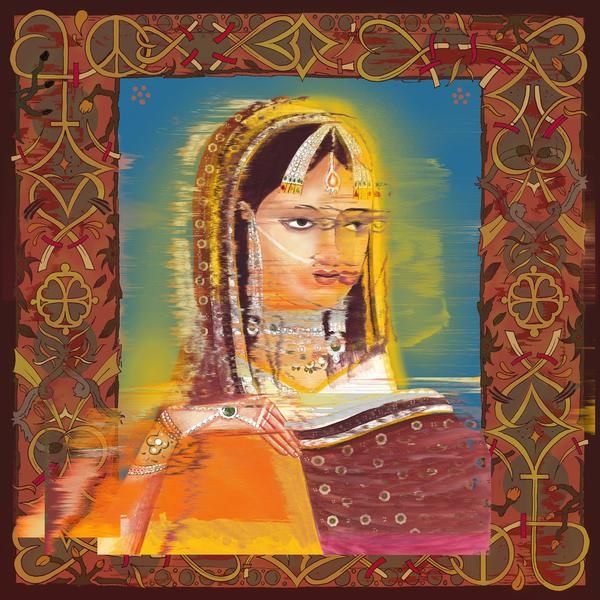
Record label vs. independent? Super Bowl crowds vs. the streets? Musicians have long had to trade between mass audience and integrity to their sound. Especially in a genre driven by the proverbial motto “money over everything,” two distinct cultures have evolved: hip hop of the billboards and hip hop of the underground. In the former, artists sign to labels abound, diluting their sound and marketing themselves to major appeal (See: Drake’s “6 God”). As for the latter, the artistry has always started and ended at the sound.
Few rappers today embody the values of DIY, independent hip hop as much as Queens-bred Indian rapper Heems. Launching his own label, Himanshu Suri burst onto the rap scene with Das Racist in 2008. After the group made rounds in the mixtape circuit and released an album, Heems had a short stint as a solo artist before leading his newest venture with Pakistani actor/rapper Rizwan Ahmed/Riz MC and British producer Redinho: Swet Shop Boys.
Although undeniably hip hop, their latest project Sufi La oozes South Asian influence. Its cultural showcase is something you won’t find on any major label rap release; the sound is utterly undiluted. Tablas and dhols displace snares and toms, elathalams replace hi-hats; ghungroos sub in for 808 maracas. The only elements that consistently reflect traditional hip hop are the bass lines.
“Although undeniably hip hop, their latest project Sufi La oozes South Asian influence.”
Yet, the choice lies not in aesthetics, but rather in the historic development of South Asian music, which has created a variety of drums and stringed instruments, but not given much focus to developing the driving bass lines that underpin modern Western music.
Opening with the high intensity “Anthem,” this EP never once takes a break. Heems is flowing right out the gate: “He went from acting unruly, now he acting in movies / Yo, back when the action was packin’ an uzi.” As the duo trades verses over six tracks, it isn’t long before the weaker of the two becomes clear: MC Riz. Not to call him untalented, but every 3 Stacks does have his Big Boi.
“I think, what if I was fairer skinned? Had less of the melanin / Would I get more work or would I not be worth anything?” Riz’s verses are more internal, more reflective than his counterpart’s braggadocious ego inflations. Yet, in Sufi La’s energy and Heems’s domineering presence, most of these ruminations are lost.
“Its anti-radio sonics are a commitment to their uniquely South Asian artistry.”
Although samples are sparse across the project’s 15 short minutes, the atmospheres stretch from dated Carnatic to gangster Bollywood soundtrack. In doing this, the EP boasts neither a radio hit nor a straightforward club banger. While a weakness on any traditional rap release, this refusal to a wider appeal is one of Sufi La’s biggest strengths. Its anti-radio sonics are a commitment to their uniquely South Asian artistry.
On “Thas My Girl,” both MC’s glide over the most electronic-heavy beat of the project, recounting their “conquests.” While the track opens with a snake charmer-esque tune on electric piano, the transitions are dynamic, culminating in the chorus at the tail end of the track where Heems and MC Riz croon against compressed synths colliding with another at breakneck pace.
“Gotta pay for all the Hermès that I sport.” Even with its unique South Asian cultural rooting, Sufi La retains much of the unique elements of broader hip hop culture. “Now my bag’s Louis, what your shit to me?” Bragging, boasting and frequent misogyny is abound. There’s gunplay talk, mention of Xanax and frequent discussion of how they blow their money. These rappers do hail from NYC and London after all.
Both Heems and Riz MC have been vocal advocates about the deteriorating condition of brown people worldwide. Last year’s LP Cashmere revolved around themes of a post 9/11 world, one with frequent references to “random” inspections at US terminals. Yet, on their most recent effort, these topics have been put on the backburner. Instead, Sufi La is a return to Bronsonian rap-about-rapping technique. This is best exemplified on Heems’s solo track “Birding.”
“From intro to outro, the Swet Shop Boys’s newest effort refuses to let go.”
“I’ve been to Hell and back and then Hell again / Brown pelican, streets is where I dwell again / All you rappers on the mic sound dull / Me? I’m fly, swallow-tailed gull.” Beyond vague references to his superiority and possession of your girl, the song has no real message. Or purpose. Beyond entertainment — and entertain it does — rhyming obscure bird species over a sample of a bird singing, “Birding” provides that same odd, nonsensical satisfaction that Serj Tankian used to channel on so many System of a Down cuts. For Heems, it seems to be lyrical exercise above anything else. “Black-footed albatross, Cassin’s auklet / American bittern, Brewer’s blackbird / Mountain bluebird, brown booby / Indigo bunting, bushtit.”
From intro to outro, the Swet Shop Boys’s newest effort refuses to let go. The music is crisp, the arrangements are refreshing and the South Asian influence is undeniable. Although rap has long had an obsession with sampling and the fusion of genres, there has been historically little exploration into the millennia-old traditions of South Asian sound. Sufi La pushes against that, pioneering a new, truly international hip-hop sound. If anything, its brevity leaves you asking for more.
* * *
The original version of this post appeared on The Michigan Daily on June 7. Aaruran Chandrasekhar is a writer studying philosophy and mathematics at the University of Michigan. His oeuvre bridges prose, essays, creative nonfiction, and musical criticism. For more visit aaruran.com.












